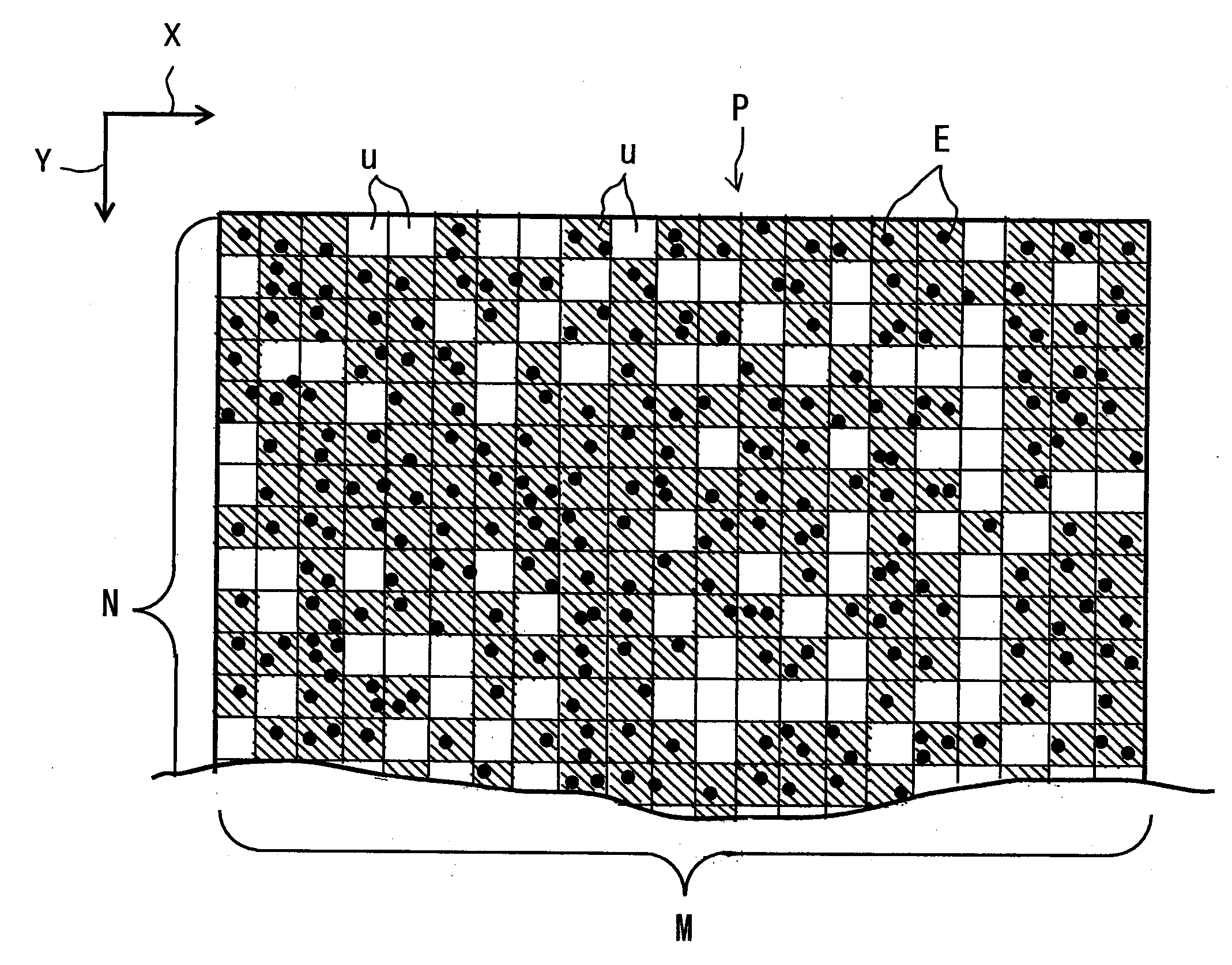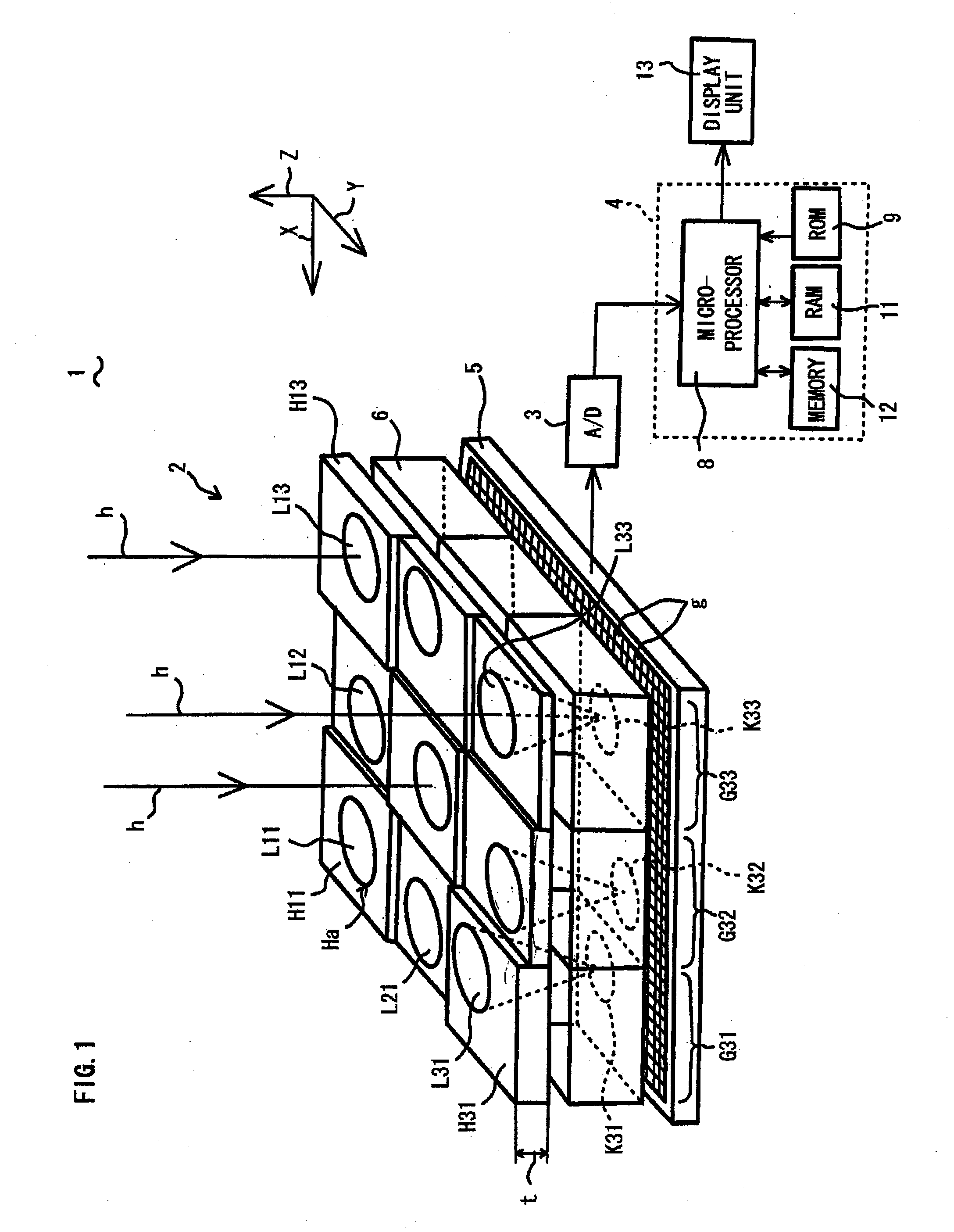Optical Condition Design Method for a Compound-Eye Imaging Device
a technology of optical condition and imaging device, which is applied in the field of optical condition design method of compound eye imaging device, can solve the problems of not being able to always stably not being able to increase the definition of the reconstructed image, so as to achieve stably obtain the reconstructed, reduce the portion of the same image information, and high definition
- Summary
- Abstract
- Description
- Claims
- Application Information
AI Technical Summary
Benefits of technology
Problems solved by technology
Method used
Image
Examples
first embodiment
[0034]An optical condition design method for a compound-eye imaging device 1 according to a first embodiment of the present invention will be described with reference to FIG. 1 to FIG. 3. FIG. 1 is a schematic perspective view, with a block diagram, of the compound-eye imaging device 1 formed based on optical conditions determined by the optical condition design method according to the first embodiment. As shown in FIG. 1, the compound-eye imaging device 1 comprises an imaging device body 2 for collecting lights h from a target object and forming an image therefrom, and an image processing unit 4 connected to the imaging device body 2 via an AD (Analog-to-Digital) converter 3 for forming a reconstructed image from image information (multiple unit images) output from the imaging device body 2.
[0035]The imaging device body 2 comprises: 9 (nine) optical lenses L11, L12 . . . L33 for collecting lights h from the target object at different angles, respectively; holders H11, H12 . . . H33...
second embodiment
[0053]Referring to FIG. 4, an optical condition design method according to a second embodiment of the present invention will be described. FIG. 4 is a schematic enlarged view showing an imaginary object (target object) plane used in the present embodiment. The present embodiment is basically the same as the first embodiment except for the evaluating step and the condition determining step. In the first embodiment, the ratio of the unit surfaces u having at least one pixel observation point E is calculated using the coverage ratio R so as to determine that a higher coverage ratio R corresponds to a larger dispersion of the pixel observation points E. On the other hand, in the evaluating step of the present embodiment, the number of pixel observation points E of each unit surface u is calculated as a local density of the each unit surface u, and the variance (meaning the same as variance in the statistics) of the local densities of the unit surfaces u is evaluated as a dispersion of t...
example
[0058]An example of the present invention and comparative examples were prepared and compared as follows. The three-dimensional position of the optical lenses L11, L12 . . . L33 were set as variables, and the downhill simplex method was used as an algorithm to change each variable each time to allow sufficient number of successive changes of the variables so as to obtain values of the variables giving a maximum total coverage ratio R (optimum optical condition). Four imaginary object planes P were set at distances of 0.2 m (meter), 0.4 m, 5 m and 10 m, respectively, from the compound-eye imaging device 1. The number of unit surfaces u on each of the imaginary object planes P was set to be the same as the number of the pixels g of the solid-state imaging element 5. More specifically, the numbers M and N of unit surfaces u in the X and Y directions of each imaginary object plane P were set to be the same as the numbers of pixels g in the X and Y directions of the solid-state imaging e...
PUM
 Login to View More
Login to View More Abstract
Description
Claims
Application Information
 Login to View More
Login to View More - R&D
- Intellectual Property
- Life Sciences
- Materials
- Tech Scout
- Unparalleled Data Quality
- Higher Quality Content
- 60% Fewer Hallucinations
Browse by: Latest US Patents, China's latest patents, Technical Efficacy Thesaurus, Application Domain, Technology Topic, Popular Technical Reports.
© 2025 PatSnap. All rights reserved.Legal|Privacy policy|Modern Slavery Act Transparency Statement|Sitemap|About US| Contact US: help@patsnap.com



